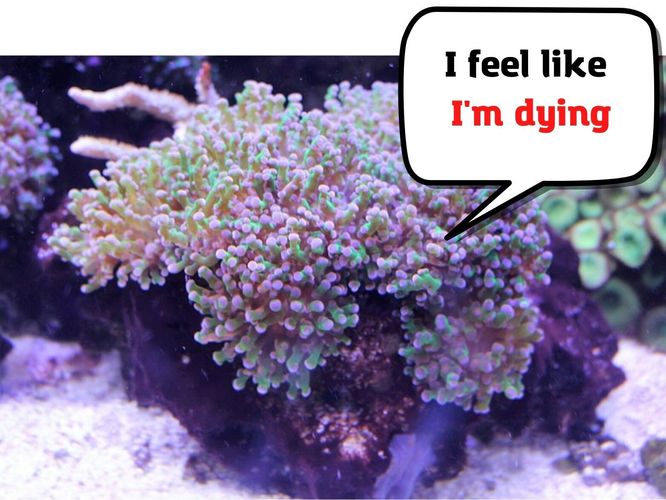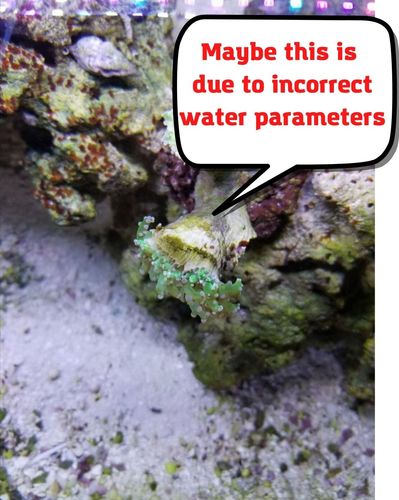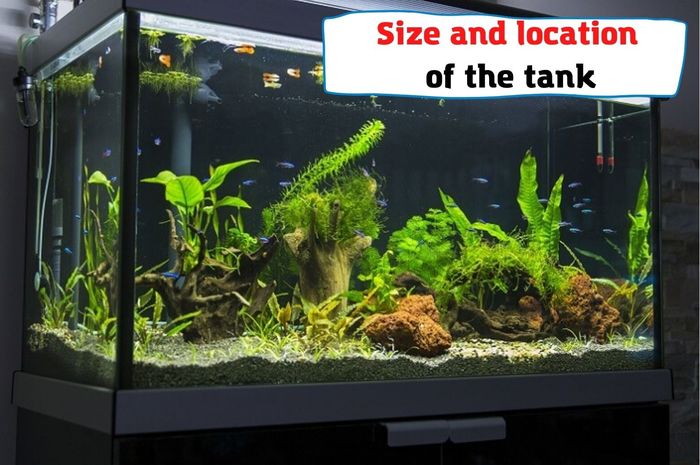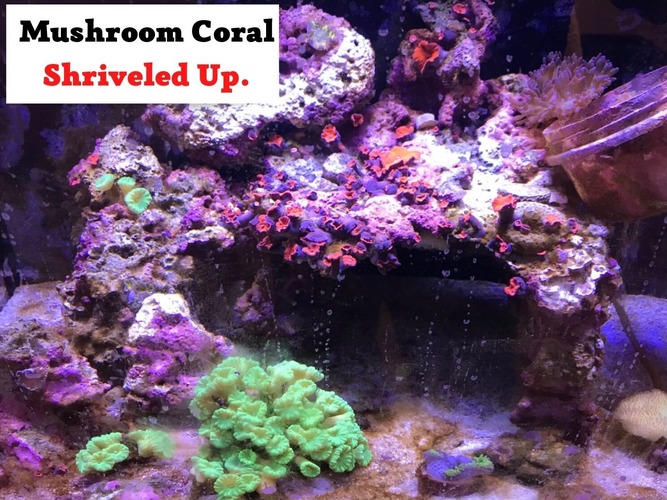
Many mistook corals for plants until recently when research proved that corals are animals. As with every other characteristic of a living organism, they are susceptible to death. But what can cause the death of frogspawn coral?
This article reveals the key factors that could cause the death of your frogspawn coral.
At the end of this post, you will know the various factors that can cause their death, whether your frogspawn coral is dying as a result of aging, and many more!
Let’s get started!
Frogspawn Coral
Frogspawn coral is a hardy species that can be found in many locations globally. Locations where they’re readily found include Australia, Fiji, and Soloman’s Island.
Frogspawn coral refers to species belonging to the Euphylliidae family. Frogspawn coral usually stays out all the hours of the day. This is one reason they’re an excellent choice for the visual aesthetic of your aquarium.
Although care tips, characteristics, habitat parameters, and threats to health and well-being apply to many species of the Euphylliidae family, an aquarist must know that there are a few differences between each species, especially with respect to propagation among others.
Why is my frogspawn coral dying?
There are many probable reasons your frogspawn coral is dying. We’ve listed them all further in the article.
Incorrect Water Parameters

Frogspawn coral is a tough species and can survive a range of habitat parameters. Regardless, an aquarist ought not to push his luck. The best method to handle this is to create stable water parameters. Below are some very important parameters you must take control of.
Hardness
Hardness is usually used to refer to alkalinity. It is measured in dkh, which stands for Degrees of carbonate hardness.
Measuring the hardness of the water is a way to assess how much bicarbonate is available in the water. This is vital because bicarbonate is one of the major components utilized to build coral skeletons.
Hence, it would help if you had the proper range in your aquarium to ensure sufficient bicarbonate for the healthy growth of your frogspawn coral.
The proper hardness for your aquarium is 8-12 dkh. It would be best to consistently maintain a precise level because your aquarium won’t do well if the hardness level changes each day dramatically.
If you need to get your alkalinity level up within the range, it would be best to do so slowly. This will help your frogspawn coral acclimatize well without any threat to their health.
Water temperature
The natural habitat of marine life in tropical reefs usually enjoys a temperature of about 73°F to 84°F. This is surely not the case with your aquarium’s water temperature because the temperature of your house is usually cooler than 73°F. Hence, you’ll need an aquarium heater for your aquarium to help you keep the water temperature from dropping below 73°F.
The recommended temperature range for your aquarium should be similar to the range in their natural habitat; 73°F to 84°F.
Again, it would be best to consistently maintain a short temperature range, such as between 78°F to 84°F. The consistency in ensuring a stable range is more important than simply monitoring the values to ensure that you are within the acceptable water temperature range.
Nitrate
It is ideal for your nitrate level to be minimal. That is proof that your biological filter is working. In a properly functioning aquarium with good recycling, bacteria convert nitrogen waste, usually the form of bacteria, into nitrite, which is then turned into nitrate by other bacteria.
Nitrate becomes a threat to the life of your frogspawn coral when your aquarium is overcrowded and mature. This is because more nitrate is generated, leading to an increase in the tank.
The quickest and most biological way to reduce nitrate levels in the aquarium is to perform a partial water change routinely. Another way to consistently keep your nitrate level low is using beneficial bacteria which eat the nitrates through a process called carbon dosing. Carbon dosing is a process of allowing beneficial bacteria to grow in your tank. You may use bio pellets to add carbon to your tank. This will boost the population of the bacteria and, in turn, help you keep the nitrate level consistently low. It would also help to introduce other corals that absorb nutrients from the water column.
Salinity
Salinity, in simple terms, refers to the amount of salt in the water, and this isn’t easy to measure. The salinity of the aquarium must be similar to the salinity of the ocean. The proper measure is to keep the aquarium reef at the specific gravity of 1.025. This is the easiest way to ensure that the salt concentration of the water in your aquarium is similar to that of the ocean.
Logically, you have to add salt to the water to regulate the salinity.
pH
The pH level indicates how acidic or alkaline your aquarium reef water is. The low end of the pH scale reads acidic, while the higher end reads alkalinity. pH level is one of the most crucial parameters for the health and sustenance of your frogspawn coral.
The proper range for a healthy saltwater tank is 8.1-8.4. Again, stability of the pH is essential because sudden changes in the pH can cause problems for your frogspawn coral.
Tank size and placement

Space and placement are crucial to the health of frogspawn coral. Small-sized aquariums may not be ideal for keeping frogspawn coral because frogspawn coral has an aggressive nature. Their sweeper tentacles are used to keep their surroundings clean by injuring nearby corals. Frogspawn coral is territorial and usually battle for territory aggressively. Apart from this aggressive nature, they are also moderately sized. This means they require bigger tanks for space and a good 6-8 inch distance from other coral.
You also have to place it in a location where it can get adequate lighting. If your lighting is low, it would be best to place it close to the top of the aquarium to ensure that it gets enough light for growth and general well-being.
Alternatively, you can go for precision lighting systems if you do not wish to move them to the top or middle of your tank. Precision lighting systems that focus lights in specific directions will ensure your frogspawn coral’s growth and overall well-being in deeper tanks.
Ammonia
Ammonia is one water parameter that is crucial to the health of your frogspawn coral. It is typically a result of the breakdown of organic waste in your aquarium. Biological functions such as excretion and the rotting of other organic components of your tank, such as plants and live rocks, are the cause of the presence of ammonia in your aquarium.
You have to watch out for ammonia is because it is a harmful waste. High levels of ammonia can cause the death of your frogspawn coral.
The best ammonia level for your aquarium tank is 0ppm. You must try to keep it at the barest minimum. A fully cycled aquarium should not have ammonia in its water. You can keep the ammonia level in check with a biological filter that removes ammonia from your aquarium.
Physical Damage
Frogspawn coral is tough species, but without proper care, they may die fast if subjected to diseases. Physical damage is one reason your frogspawn coral may become susceptible to disease. Your frogspawn may become vulnerable to diseases if the tentacles of your frogspawn coral are shaved against a rock or placed in intensified flow. They may fall victim to the brown jelly disease, which is lethal and can kill your frogspawn in a few days.
One of the most important things to do to keep your frogspawn coral alive and safe is to protect the delicate tentacles of your frogspawn coral. It would also help to engage new frogspawn corals in an iodine bath and quarantine them for a few weeks before putting them in your aquarium. You may have to do the same for infected frogspawn corals before reintroducing them into the tank.
Aging
Generally, the lifespan of frogspawn coral is still unknown. It is difficult to say that frogspawn coral dies after living for a specific period. There have been records of frags cut off from frogspawn corals that have lived for up to ten years and more in an aquarium. Studies also suggest that some species of frogspawn coral live up to 500 years and more.
So, age is not a reason for the death of frogspawn coral. With the right water parameters and favorable living conditions, frogspawn coral will live for a very long time.
Conclusion
Regular monitoring is one sure way to keep your frogspawn alive. It will help you ensure that the water is consistently in proper condition. If you fail to ensure the correct water parameters and careful handling to prevent physical damage, your frogspawn may suffer irreversible damage and even death in the long run. Take these tips seriously.
- Snail Mantle Collapse – Here’s What Every Pet Owner Should Know - April 2, 2023
- Algaefix Killed My Fish – What Have I Done Wrong? - March 2, 2023
- How Long Can Live Rock Be Out of Water? And What Will Happen Then? - February 2, 2023




